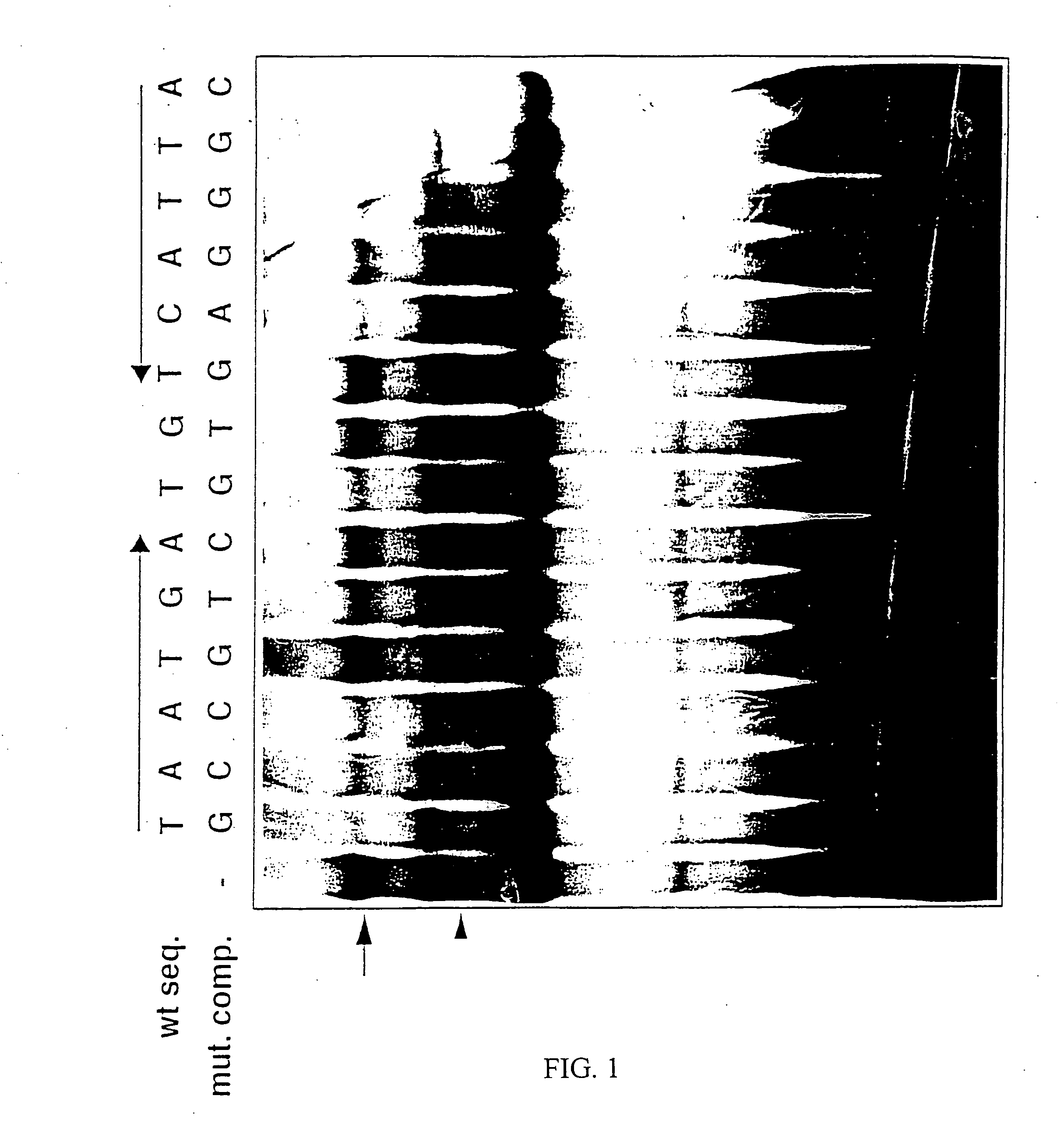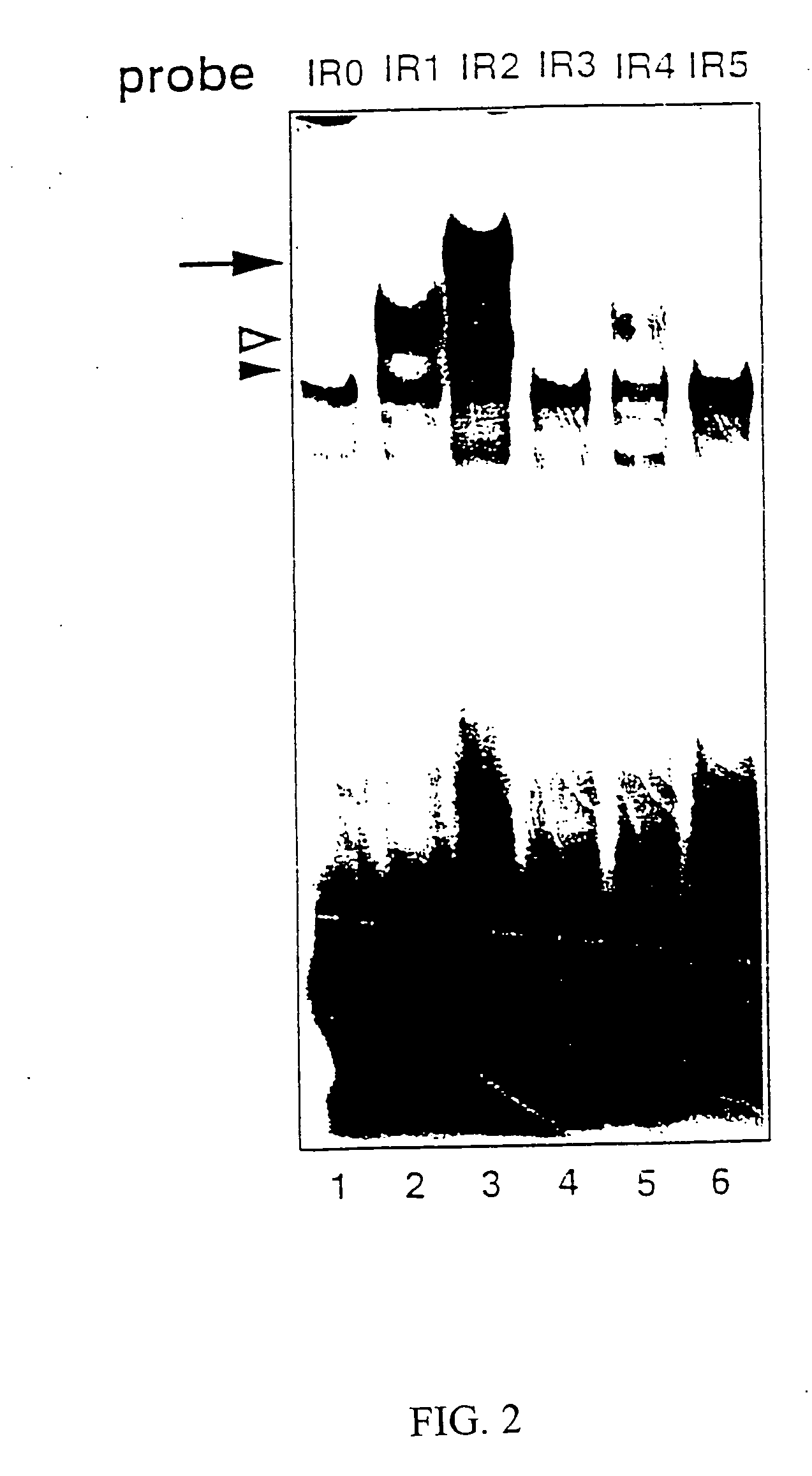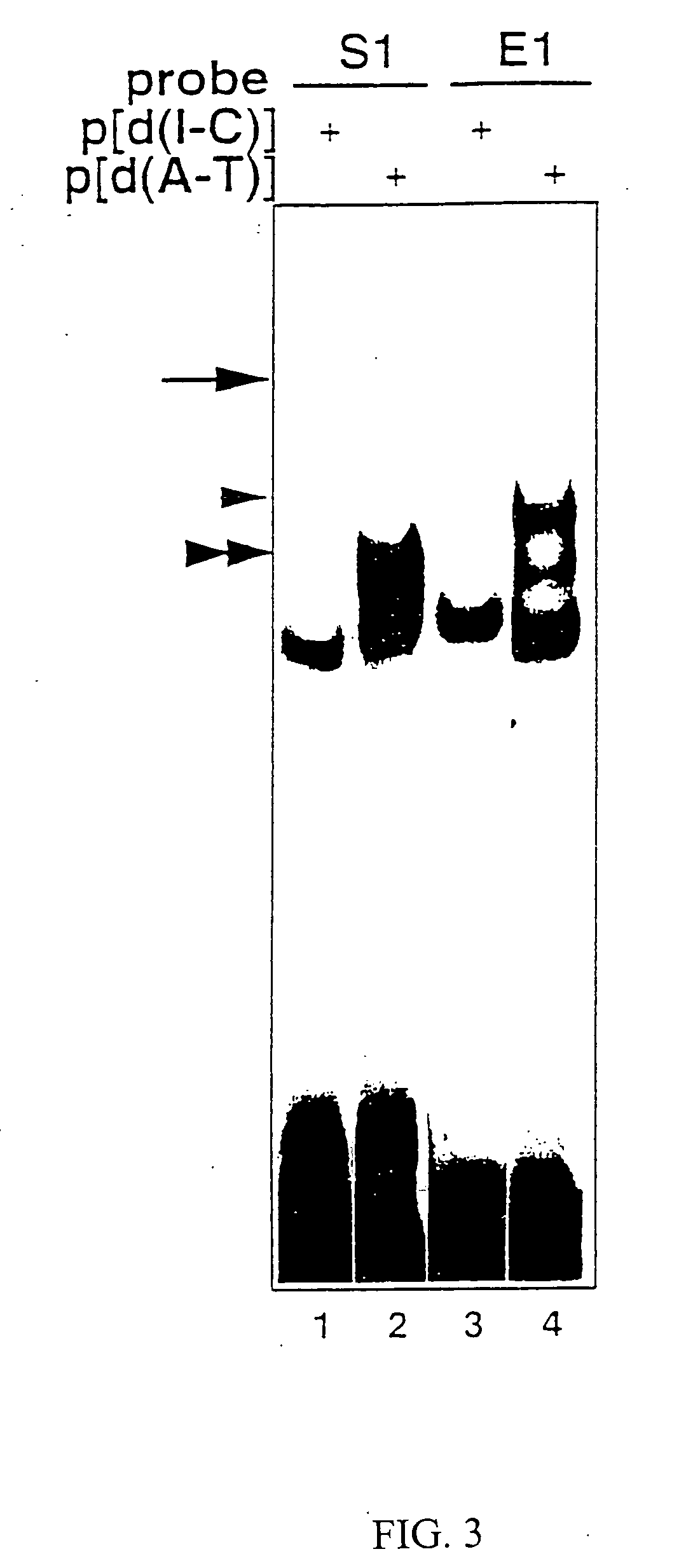Methods for modulating apoptotic cell death
- Summary
- Abstract
- Description
- Claims
- Application Information
AI Technical Summary
Benefits of technology
Problems solved by technology
Method used
Image
Examples
example 1
Identification of Transcription Factors which Bind to Regulatory hCD95 Polynucleotides
[0062] The identification of regulatory human CD95 polynucleotides is described in U.S. Pat. No. 5,912,168, the disclosure of which is hereby incorporated by reference in its entirety. The transcription enhancer region denominated E1 (SEQ ID NO: 1) resides between nucleotide positions −1007 and −964 in the hCD95 gene, and the transcription silencer region denominated S1 (SEQ ID NO: 2) resides between nucleotide positions −1035 and −1008 in the hCD95 gene. These regions mediate cell type-specific and activation state-dependent transcriptional regulation of the CD95 gene during activation-induced cell death.
Electrophoretic Mobility Shift Assay (EMSA) Protocol
[0063] Nuclear extracts were prepared from Jurkat (human T lymphoma cells) and MP-1 (human EBV-transformed B cells) grown under 5% CO2 in RPMI 1640 medium supplemented with antibiotics and 5% fetal bovine serum, and from HeLa, COS-7, CV-1 (CO...
example 2
Modulation of Apoptotic Cell Death In Vitro by YB-1 or PURα
In Vitro Assays Using Hep G2 Cells
[0080] Modulation of apoptotic cell death by regulating the binding of YB-1 or Pur α to the CD95 promoter was demonstrated in the liver carcinoma cell line Hep G2 using two different techniques, namely anti-sense oligonucleotides and decoy oligonucleotides.
[0081] Hep G2 cells were transfected with pools containing five anti-sense phosphorothioate oligos, of 22 nucleotides each, to either YB-1 or Pur α. Cells were transfected with 100 μM of oligonucleotides (pools 1, 2, 3, 4 and a non-specific oligo) using the published techniques of Stewart et al., Biochem Pharmacol., 51:461-469, 1996. The rate of cell death was determined using MTT as a substrate according to the methods of Vistica et al., Cancer Res. 48:4827, 1991.
[0082] Pool 1 consisted of five 22-mer oligonucleotides to the anti-sense strand of YB-1 identified as SEQ ID NO: 29-33. Pool 2 consisted of five 22-mer oligonucleotides to t...
example 3
Modulation of Apoptic Cell Death In Vivo by YB-1
[0090] The ability of YB-1 to modulate apoptotic cell death in vivo was examined as follows.
[0091] Mouse fibrosarcoma cells were co-injected with the following oligonucleotides: (1) negative control oligonucleotide (oligo 81); (2) two decoy oligonucleotides corresponding to the 5′ to 3′ strand and 3′ to 5′ strand, respectively, of the CD95 silencer regulatory sites identified in SEQ ID NO: 2 and 11; and (3) a pool consisting of the YB-1 anti-sense oligonucleotides provided in SEQ ID NO: 20 and 21. Groups of three mice were injected with either the cells plus oligonucleotides or with cells alone under the skin and the mice were observed for five weeks.
[0092] All the mice treated with either fibrosarcoma cells plus negative control oligonucleotide or cells only grew tumors about 1.5 cm in diameter. No tumors were apparent in any of the mice treated with either the decoy or anti-sense oligonucleotides. These results demonstrate that re...
PUM
| Property | Measurement | Unit |
|---|---|---|
| Fraction | aaaaa | aaaaa |
| Fraction | aaaaa | aaaaa |
| Volume | aaaaa | aaaaa |
Abstract
Description
Claims
Application Information
 Login to View More
Login to View More - R&D
- Intellectual Property
- Life Sciences
- Materials
- Tech Scout
- Unparalleled Data Quality
- Higher Quality Content
- 60% Fewer Hallucinations
Browse by: Latest US Patents, China's latest patents, Technical Efficacy Thesaurus, Application Domain, Technology Topic, Popular Technical Reports.
© 2025 PatSnap. All rights reserved.Legal|Privacy policy|Modern Slavery Act Transparency Statement|Sitemap|About US| Contact US: help@patsnap.com



